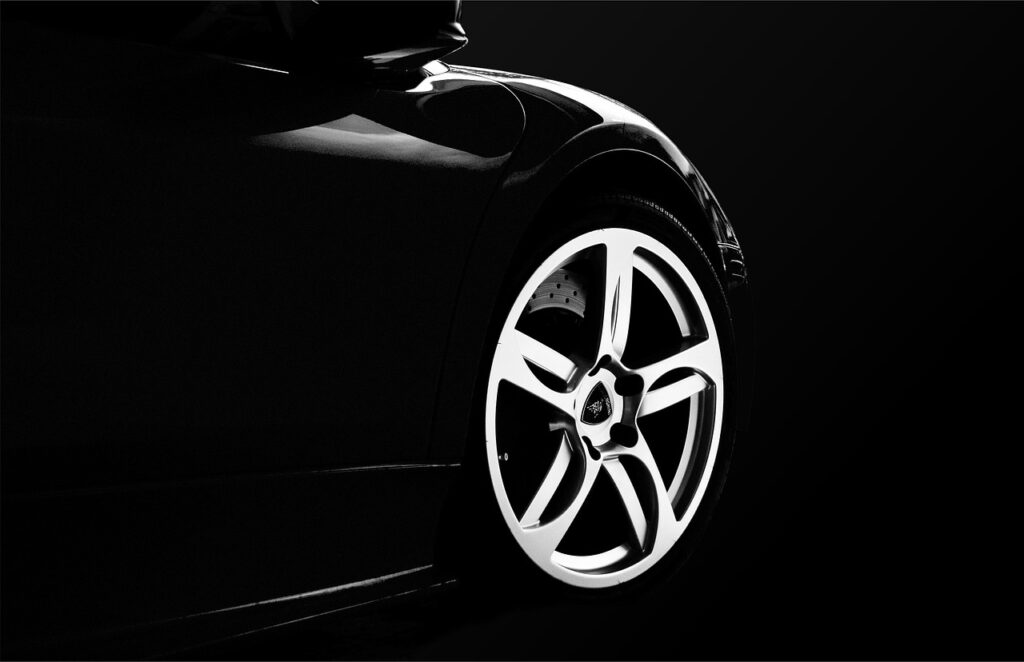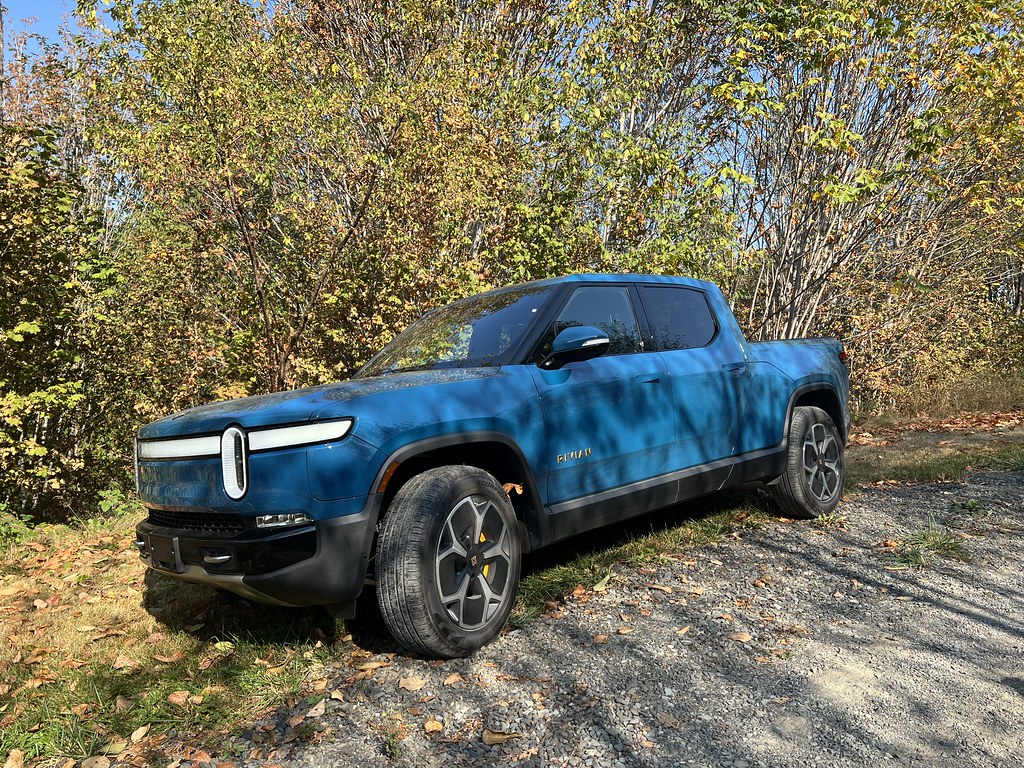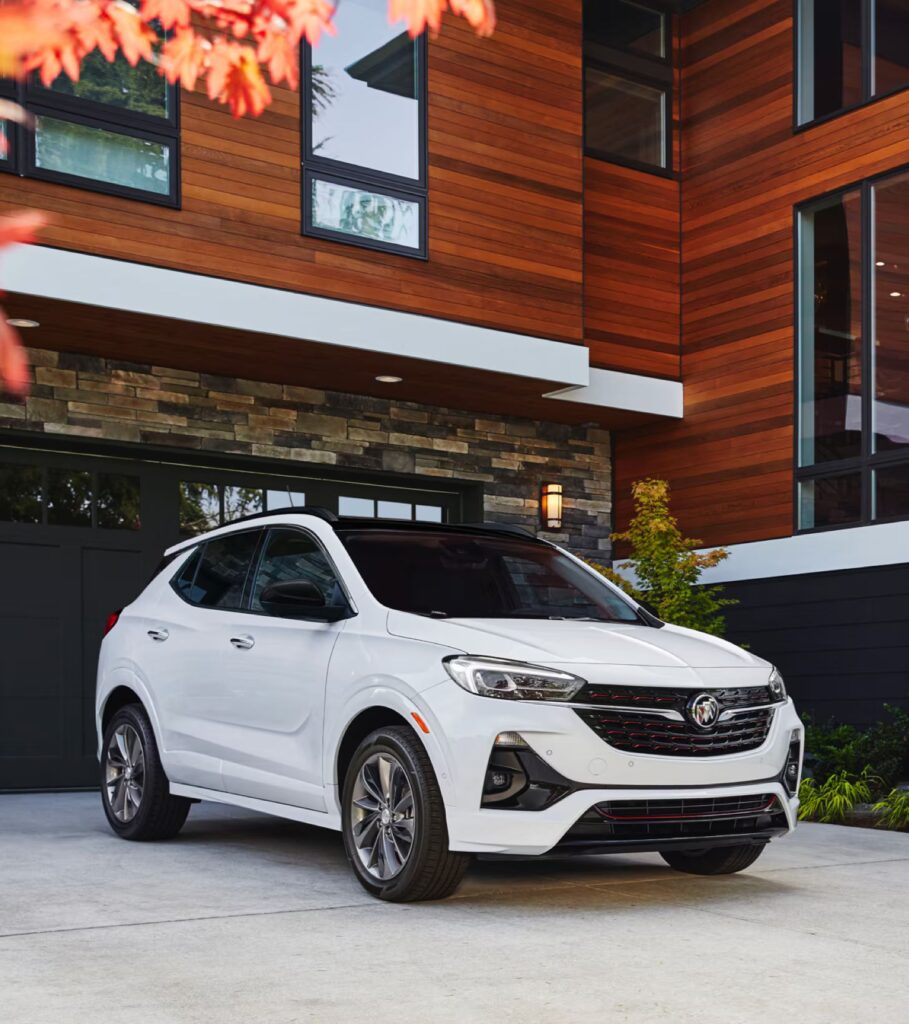
In the bustling world of automotive enthusiasm, where cutting-edge technology and flashy features often steal the spotlight, there’s an understated hero that truly defines a vehicle’s worth: reliability. While performance metrics and fuel economy figures are undoubtedly important in guiding a car enthusiast’s choice, the underlying strength and endurance of an engine—its ability to just keep going, mile after mile, year after year—is a factor that lurks in the background but is arguably the most crucial.
This isn’t merely about avoiding breakdowns; it’s about the peace of mind that comes with knowing the heart of your machine is built to last. Mechanics often share an untold truth about certain engines: these are the powerplants that continue to churn long after others have faded into history, their designs having withstood decades of real-world testing. They are the silent workhorses, the unsung heroes that underpin the entire automotive experience, ensuring that whether you’re embarking on a daily commute or an epic road trip, your vehicle will get you there and back.
Today, we’re taking an in-depth journey to celebrate these engineering marvels. We’ll delve into the stories behind some of the most reliable engines ever created, exploring what makes them so robust, why they’ve earned their legendary status, and how they’ve left an indelible mark on automotive history. Forget planned obsolescence; these are the motors that truly won’t die, proving that some things are just built to endure.
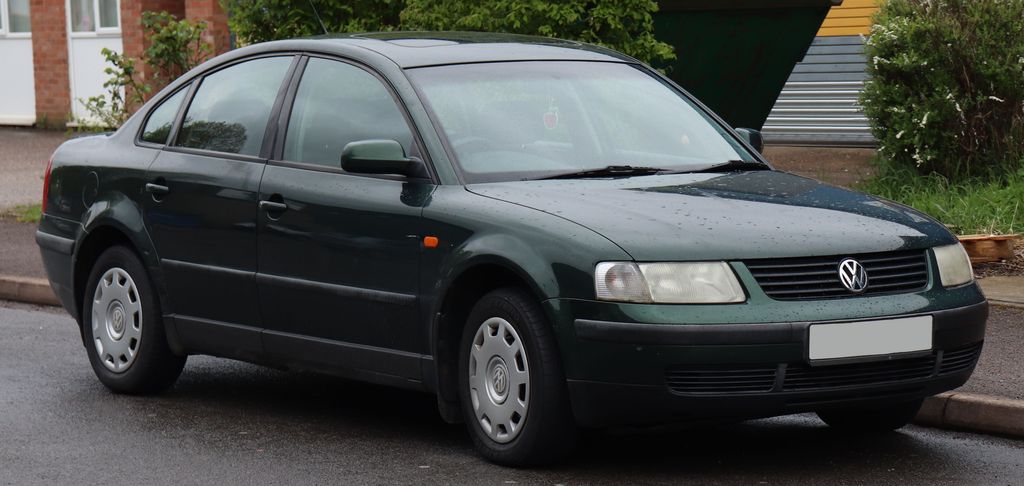
1. **Volkswagen 1.9 TDI**When you think of Volkswagen engines, immense reliability isn’t always the first thing that springs to mind for every model, with many discussions on forums often steering potential buyers away from certain powerplants. However, the 1.9 TDI stands as a shining exception, a veritable legend in its own right that completely defies these preconceptions and consistently earns top points whenever the conversation turns to reliable, long-lasting diesel engines.
Introduced in the 1990s, this engine quickly found a home across a vast array of the VW Group’s brands, powering everything from popular Golfs and Jettas to numerous Skodas and Seats in Europe and other global markets. Its production run was impressive, extending into the late 2000s and even the early 2010s for some applications, cementing its legacy across multiple vehicle generations. This widespread adoption is a testament to its inherent durability and widespread trust.
What truly sets the 1.9 TDI apart is its incredible endurance. With regular and proper maintenance, these engines aren’t merely capable of reaching 300,000 miles; they will comfortably go for 600,000 miles, and in many documented cases, even more than that. This level of longevity is practically unheard of in the automotive world, making it a truly ‘unkillable’ motor. Adding to its impressive resume, the 1.9 TDI is also well-known for starting up with remarkable ease in freezing temperatures, a feat that many other diesel engines simply cannot match. Amazingly, VW even offered the 1.9 TDI in the U.S. for a period, meaning if you happen to pick up an older VW with this engine, you’re likely to have a reliable companion that will not disappoint.
Car Model Information: 2024 Mazda CX-5 2.5 S Carbon Edition
Categories: All articles needing additional references, All articles with dead external links, All articles with unsourced statements, All articles with vague or ambiguous time, Articles containing German-language text
Summary: Automotive manufacturer Volkswagen Group has produced diesel engines since the 1970s. Engines that are currently produced are listed in the article below, while engines no longer in production are listed in the List of discontinued Volkswagen Group diesel engines article.
Get more information about: List of Volkswagen Group diesel engines
Buying a high-performing used car >>>
Brand: Volkswagen Model: 1.9 TDI
Price: $25,958 Mileage: 26,006 mi.
Read more about: The 12 Most Electrifying 1980s Cars Coveted by Collectors, and the Musicians Who Share the Passion
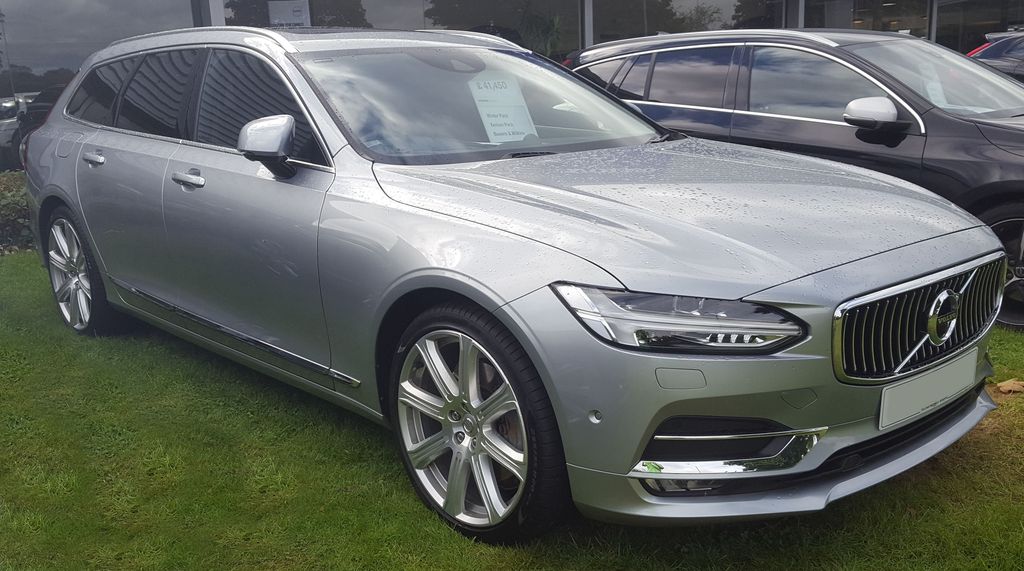
2. **Volvo D5**Volvo, alongside Audi, was an early pioneer in adopting five-cylinder engines for many of its vehicles, showcasing a forward-thinking approach to engine design. While it initially began its journey as a gasoline five-cylinder unit, gracing the engine bays of brilliant models like the V70 R, Volvo soon expanded its offerings by introducing a diesel five-cylinder variant. This ‘oil burner’ was specifically designed to cater to drivers who prioritized robust low-end torque and impressive fuel economy, a combination that has always been highly sought after.
For the majority of its operational life, the D5 was a potent 2.4-liter unit, delivering a balanced blend of power and efficiency. However, in the late 2000s, a more economical 2.0-liter version was introduced into the lineup, further enhancing its appeal to a broader market segment. The most powerful iteration of this engine was capable of producing a cool 212 horsepower, and it was frequently paired with Volvo’s renowned All-Wheel Drive (AWD) systems, providing confident handling and performance in various conditions.
Regrettably for North American enthusiasts, the Volvo D5 engine was never officially offered in that market, making it a tantalizing prospect for an engine swap for those looking to experience its unique blend of power and reliability. The most defining characteristic of the Volvo D5, however, is its incredible reliability. Reaching 300,000 miles or possibly even more with regular maintenance is not just a possibility but a common expectation. Engineered in Sweden, a country known for its demanding climate, it’s no surprise that this engine can handle harsh winters with effortless ease, consistently starting and performing without a hitch.
Read more about: Remember Them? 12 ‘Awkward’ Hatchbacks That Absolutely Owned the Road and Became Driver Favorites!

3. **Mercedes-Benz OM617**It’s truly remarkable to reflect on a time when Mercedes-Benz stood as a towering symbol of immense reliability and longevity, a reputation that shone brightest throughout the 1980s and 1990s. During this golden era, there was hardly anything that could truly defeat a Mercedes, apart from perhaps extreme and deliberate destruction. And even then, if that vehicle was fortified with the legendary OM617 under its hood, it’s fair to say that even such extreme measures might not have been enough to bring it down, such was its inherent strength and engineering prowess.
The OM617 holds a unique place in Mercedes-Benz history as the three-pointed star’s only ever production five-cylinder engine, and notably, it is exclusively a diesel unit. Mercedes never ventured into gas-powered five-cylinder engines, so for those seeking the distinct ‘I5 thrills’ from the German marque, this diesel powerhouse is the one and only option. The good news, however, is that Mercedes generously placed the OM617 into quite a few of its models, making it a relatively accessible icon for discerning buyers. Displacing 2.7 liters in most applications, and sometimes even 3.0 liters, the OM617 was a true powerhouse, offering a wealth of low-end torque that made it incredibly capable.
Beyond its impressive performance, which also included a surprisingly good sound profile, the OM617 is renowned for its ability to take an absolute beating, even when subjected to various modifications. But that’s not even scratching the surface of its legendary reliability. This is genuinely one of the only automotive engines in history that can go for quite literally millions of miles. With diligent care and maintenance, owners report no problem achieving such astronomical figures. Mercedes did officially offer this engine in North America, and foreign market models equipped with the OM617 are now old enough to be imported, presenting an exciting opportunity for enthusiasts looking for a cool, incredibly durable used car.
Read more about: Beyond the Benchmark: 10 Long-Haul Diesels That Redefine Durability, Clocking Over 400,000 Miles Before Retirement
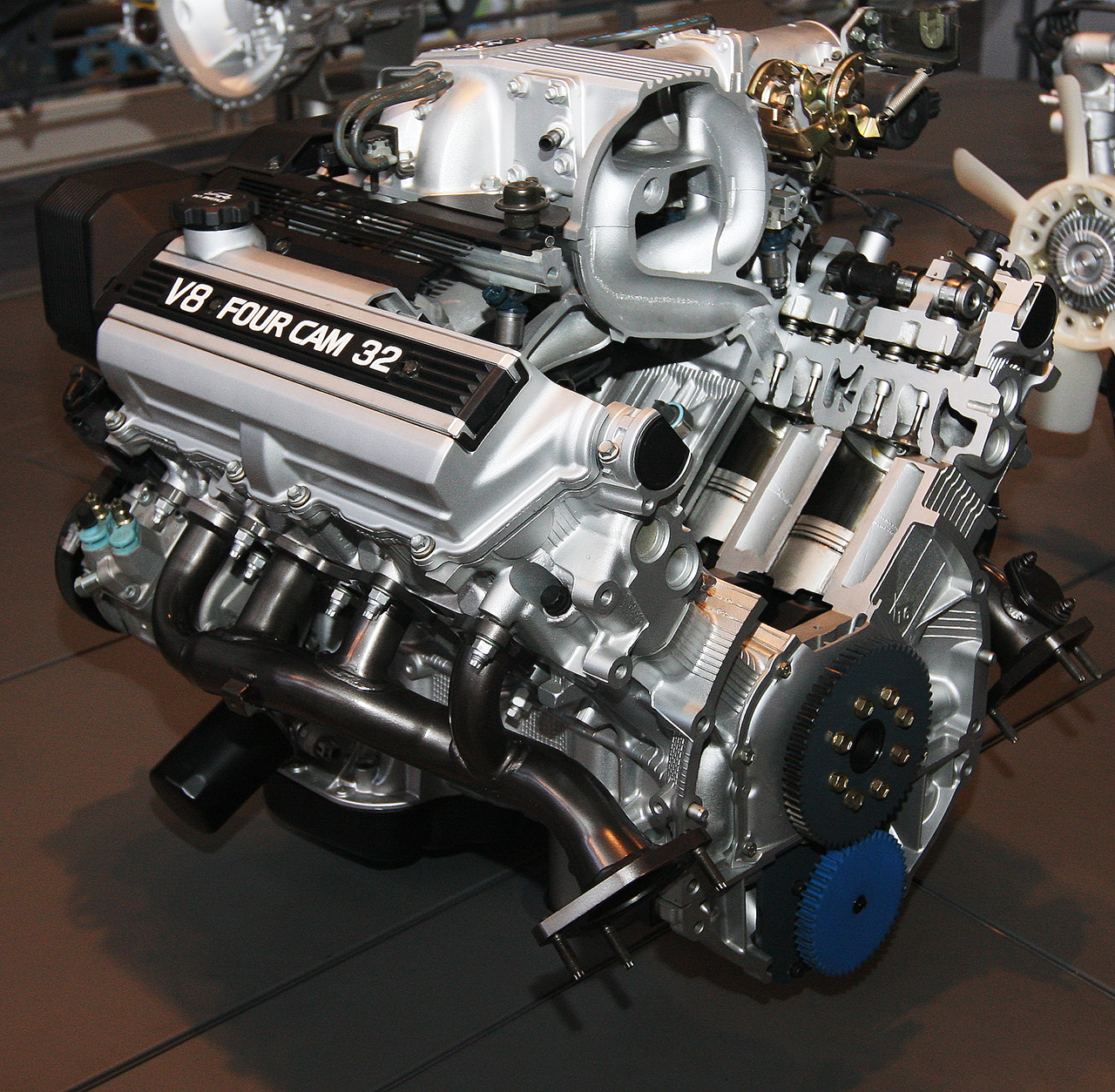
4. **Toyota / Lexus 1UZ-FE**One of the most captivating narratives in the automotive world is undoubtedly the story of Lexus. To put it succinctly, Toyota embarked on an ambitious quest to challenge the established German luxury brands directly, aiming to hit them where it hurt most. And, against considerable odds, they spectacularly succeeded. To this day, Lexus remains one of the few luxury car brands that not only survived but, on several occasions, decisively won battles against the formidable German automotive giants. A monumental reason for this triumph was the original Lexus LS, a vehicle that truly spoke for itself upon its debut.
It emerged as one of the most impressive modern luxury cars of its era and cemented its place as one of the most successful Lexus models ever, due in no small part to the groundbreaking powertrain nestled under its hood. The earliest LS400 models were equipped with a magnificent 4.0-liter naturally-aspirated V8 engine, affectionately dubbed the 1UZ-FE. Even though this was fundamentally a luxury car designed for refinement and comfort, Toyota, with its characteristic commitment to quality, did not forget to infuse the LS400 with a significant sprinkle of its well-known reliability magic.
The 1UZ-FE is not just any engine; it’s a testament to extreme durability. It holds the astonishing distinction of being one of the only automotive engines ever to be certified for use in aircraft, a monumental achievement that speaks volumes about its engineering integrity and robust construction. Beyond this incredible certification, the 1UZ-FE is completely unstoppable in real-world applications. Matt Farah of The Smoking Tire famously owned an LS400 that accumulated a staggering million miles on its odometer, a real-world demonstration that should tell you more than enough about the unparalleled endurance of this remarkable Toyota-engineered V8.
Car Model Information: 2015 Lexus LS 460 Base
Name: Lexus LS
Caption: 2019 Lexus LS 500 AWD (VXFA55, US)
Manufacturer: Toyota
Aka: Toyota Celsior (Japan, 1989–2006)
Production: May 1989 – present
ModelYears: 1990–present
Assembly: Tahara, Aichi
Class: Full-size,luxury car
BodyStyle: Sedan (automobile)
Layout: unbulleted list
Categories: 1990s cars, 2000s cars, 2010s cars, 2020s cars, All-wheel-drive vehicles
Summary: The Lexus LS (Japanese: レクサス・LS, Hepburn: Rekusasu LS) is a series of full-size luxury sedans that have served as the flagship model of Lexus, the luxury division of Toyota, since 1989. For the first four generations, all LS models featured V8 engines and were predominantly rear-wheel-drive. In the fourth generation, Lexus offered all-wheel-drive, hybrid, and long-wheelbase variants. The fifth generation changed to using a V6 engine with no V8 option, and only one length was offered.
As the first model developed by Lexus, the LS 400 debuted in January 1989 with the second generation debuting in November 1994. The LS 430 debuted in January 2000 and the LS 460/LS 460 L series in 2006. A domestic-market version of the LS 400 and LS 430, badged as the Toyota Celsior (Japanese: トヨタ・セルシオ, Hepburn: Toyota Serushio), was sold in Japan until the Lexus marque was introduced there in 2006. In 2006 (for the 2007 model year), the fourth generation LS 460 debuted the first production eight-speed automatic transmission and an automatic parking system. In 2007, V8 hybrid powertrains were introduced on the LS 600h/LS 600h L sedans.
Development of the LS began in 1983 as the F1 project, the code name for a secret flagship sedan. At the time, Toyota’s two existing flagship models were the Crown and Century models – both of which catered exclusively for the Japanese market and had little global appeal that could compete with international luxury brands such as Mercedes-Benz, BMW and Jaguar. The resulting sedan followed an extended five-year design process at a cost of over US$1 billion and premiered with a new V8 engine and numerous luxury features. The Lexus LS was intended from its inception for export markets, and the Lexus division was formed to market and service the vehicle internationally. The original LS 400 debuted to strong sales and was largely responsible for the successful launch of the Lexus marque.
Since the start of production, each generation of the Lexus LS has been manufactured in the Japanese city of Tahara, Aichi. The name “LS” stands for “Luxury Sedan”, although some Lexus importers have preferred to define it as “Luxury Saloon”. The name “Celsior” is taken from Latin word “celsus”, meaning “lofty” or “elevated”.
Get more information about: Lexus LS
Buying a high-performing used car >>>
Brand: Lexus Model: LS
Price: $24,461 Mileage: 86,267 mi.
Read more about: Beyond the Hype: 12 Underestimated Coupes That Quietly Redefined Value and Performance

5. **Toyota 2GR-FE**Could we truly discuss the pantheon of most reliable engines without prominently featuring Toyota more than once? Of course not! Toyota’s illustrious list of super durable powertrains is far too extensive and impressive to be limited to a single mention. While their catalog is vast, one engine that absolutely demanded to be singled out is the 2GR-FE 3.5-liter V6. This versatile and robust powerplant has graced the engine bays of a diverse range of vehicles, from the ubiquitous Camrys and Avalons to the surprisingly exotic Lotus Evora, showcasing its adaptability and widespread appeal.
It’s worth noting that its sibling, the 4.0-liter 1GR-FE unit, did unfortunately suffer from a few somewhat significant issues, believe it or not. However, this is decidedly not the case with the 2GR-FE. While no engine is entirely immune to minor quirks, the 2GR-FE wasn’t completely safe from a few small problems, as some units had a tendency to leak oil through the front timing cover. The crucial distinction, though, is that if you address this issue promptly and effectively, you will be rewarded with an incredibly reliable companion that will serve you faithfully for years to come.
These engines are celebrated for being pretty low maintenance, a trait highly prized by car owners. If you simply commit to the minimal regular maintenance they require, such as timely oil and filter changes, they can very easily go for hundreds of thousands of miles without complaint. The Camry stands out as the most notable application for this engine, and the indestructibility of that particular model is already the stuff of legend. The 2GR-FE truly embodies Toyota’s reputation for building engines that just won’t quit.
Car Model Information: 2024 Toyota Camry LE
Name: Toyota Camry
Caption: 2018 Toyota Camry Ascent (ASV70, Australia)
Manufacturer: Toyota
Production: March 1982 – present
Aka: ubl
Class: ubl
Layout: ubl
Predecessor: ubl
Successor: Toyota Avensis (T250)
Categories: 1990s cars, 2000s cars, 2010s cars, 2020s cars, All-wheel-drive vehicles
Summary: The Toyota Camry (; Japanese: トヨタ・カムリ Toyota Kamuri) is an automobile sold internationally by the Japanese auto manufacturer Toyota since 1982, spanning multiple generations. Originally compact in size (narrow-body), the Camry has grown since the 1990s to fit the mid-size classification (wide-body)—although the two widths co-existed in that decade. Since the release of the wide-bodied versions, Camry has been extolled by Toyota as the firm’s second “world car” after the Corolla. As of 2022, the Camry is positioned above the Corolla and below the Avalon or Crown in several markets.
In Japan, the Camry was once exclusive to Toyota Corolla Store retail dealerships. Narrow-body cars also spawned a rebadged sibling in Japan, the Toyota Vista (トヨタ・ビスタ)—also introduced in 1982 and sold at Toyota Vista Store locations. Diesel fuel versions have previously retailed at Toyota Diesel Store. The Vista Ardeo was a wagon version of the Vista V50.
Get more information about: Toyota Camry
Buying a high-performing used car >>>
Brand: Toyota Model: Camry
Price: Not Priced Mileage: 36,770 mi.
Read more about: Behind the Badge: Unexpected Car Pairings That Secretly Share Engine Technology

6. **GM Small Block V8 (LS Series)**Alright, you knew it was coming. When the conversation turns to the perfect all-around engine package, especially one that combines raw power with enduring reliability, you simply cannot go wrong with a good old GM Small Block V8. There’s a profound reason why these engines, particularly the LS family, remain incredibly popular choices for engine swaps in just about anything you can possibly imagine – provided, of course, that there’s enough room under the hood to accommodate their substantial presence. Their versatility is unmatched, cementing their status as true automotive icons.
General Motors introduced the groundbreaking LS family of V8 engines in the 1990s, and since their debut, they have been installed in an astonishing variety of vehicles. Their applications range from high-performance sports cars and formidable muscle cars to humble sedans, rugged SUVs, and robust trucks, demonstrating an incredible breadth of use. The most common and perhaps most celebrated variety of the small block V8 is the LS1, a powerful 5.7-liter unit delivering around 350 horsepower, found in revered machines like the C5 Corvette and the Pontiac GTO, vehicles synonymous with American performance.
One of the key reasons these engines last for such an extraordinarily long time is their fundamental simplicity. For many, many years, small block V8s from General Motors steadfastly utilized pushrods instead of more complex overhead camshafts, and a significant number of them featured only two valves per cylinder. This straightforward design philosophy made them remarkably easy to work on, significantly reducing maintenance complexity and costs. Crucially, these robust components can easily last over 300,000 miles, consistently proving their incredible durability. Oh yeah, there’s also the small, yet significant, fact that this is one of the easiest engines in the entire automotive world to squeeze more power out of, and to do so relatively reliably, making it a favorite for performance enthusiasts and tuners alike.

7. **Jeep 4.0 I6**The Jeep 4.0 I6 is, by many accounts, a bit of a wildcard in a list of highly reliable engines. Jeep isn’t exactly a brand universally known for consistently delivering top-tier quality or reliable powertrains across its entire lineup. Some might even recall that humorous (and clearly fake) news report claiming Jeep had ‘threatened to continue building cars,’ which succinctly encapsulates how a segment of the public feels about the brand’s general reliability. However, rewind about 30 years, and things were distinctly different, especially when it came to this particular inline-six.
For a considerable period, you could acquire a Jeep equipped with the phenomenal 4.0-liter gasoline six-cylinder engine. This powerplant was a joint development between Jeep and the American Motor Corporation (AMC), which was Jeep’s last owner before it was eventually acquired by Chrysler. As expected, this robust engine found its way into all types of iconic Cherokees and Wranglers throughout the 1980s, 1990s, and even into the early 2000s in some specific cases, becoming the heart of some of Jeep’s most beloved and enduring models.
The Jeep owners and the broader Jeep community absolutely swear by the 4.0-liter six-cylinder engine, and for very good reason: its incredible reliability and its remarkable ability to take an absolute beating. Remember, Jeeps, by their very nature and design, are built for rugged off-road capabilities, which inherently means they are expected to endure significant punishment. Similar to the GM LS V8, the 4.0 I6 is a relatively simple affair, featuring overhead valves instead of more complex camshafts. This simplicity contributes significantly to its longevity, with Jeep owners frequently reporting anywhere from 300,000 miles to a staggering half a million miles with consistent, proper maintenance. Its oversized components and robust construction create an almost bulletproof power unit, perfectly suited for the demanding life of a Jeep.
Read more about: Beyond the Benchmark: 10 Long-Haul Diesels That Redefine Durability, Clocking Over 400,000 Miles Before Retirement

8. **Honda B-Series**When enthusiasts talk about Honda, a recurring theme is the sheer bulletproof reliability of their engines, combined with an uncanny ability to withstand spirited driving. Before the celebrated K-series came along to dominate the scene, it was the Honda B-series that held court as the quintessential four-cylinder choice for any true Honda aficionado. This engine family was a genuine workhorse, powering some of the most iconic vehicles to ever roll out of Honda’s factories.
The B-series found its legendary home across a diverse range of beloved models, from the nimble Civics and sporty Integras to the innovative CR-X. It was in these vehicles that the B-series truly forged its reputation for stellar reliability and, crucially, for its high-revving character. The most famous iteration, the B16B, even powered the very first Civic Type R, cementing its place in performance history and showcasing its capabilities at the highest level.
A defining feature of the B-series, and indeed many great Honda engines, is the inclusion of VTEC – Honda’s groundbreaking variable valve timing technology. This innovation isn’t just about clever engineering; it’s what enables those exhilarating high-revving antics and has even inspired countless memes and inside jokes within the car community. It’s a technology that allows the engine to deliver a punchy performance while maintaining its inherent durability.
Despite the relative complexity introduced by features like dual overhead camshaft designs, the B-series engines are famously robust. Owners can, and often do, push these engines to their absolute limits during track days or spirited drives, yet it’s incredibly rare to hear of one failing prematurely. Even the segment of Honda owners who consistently take their cars “to hell and back” report that the B-series engine under the hood continues to soldier on, completely unfazed, proving its unyielding resilience years after production.
Read more about: The 15 Unstoppable Trucks: Engineering Excellence That Conquers 300,000 Miles and Beyond

9. **Toyota 2UZ-FE 4.7L V8**When the topic of automotive workhorses arises, especially those designed for demanding tasks, the Toyota 2UZ-FE 4.7L V8 invariably muscles its way to the forefront. This isn’t just another engine; it’s a testament to Toyota’s unwavering commitment to building powerplants that simply refuse to quit, specifically engineered to shoulder the heaviest loads in their most rugged vehicles. Born into production in 1998, this cast-iron V8 became the beating heart of legendary models like the Land Cruiser, Sequoia, and Tundra until its retirement in 2011.
With a displacement of 4.7 liters, producing between 228 and 271 horsepower, the 2UZ-FE was never about groundbreaking raw power figures. Instead, its genius lay in its overbuilt design and unwavering durability. It was developed with a low-stress approach, ensuring that every component could withstand the rigors of heavy-duty use, whether it was towing substantial trailers or traversing challenging off-road terrain. This design philosophy is a core reason why it became revered by owners worldwide.
One of the most impressive statistics associated with the 2UZ-FE is its formidable mileage capability. These engines are not just expected to last for a long time; they are built to confidently surpass 400,000 miles with surprising ease, a feat that many other engines can only dream of. A significant contributor to this longevity is its timing belt system, which, when properly maintained, offers robust and predictable service life, unlike some more complex timing chain setups that can introduce issues.
The 2UZ-FE’s enduring reliability is further underscored by independent assessments. Consumer Reports, a highly respected authority on automotive reliability, consistently ranks Toyota near the top for engine longevity. Within Toyota’s impressive catalog, the 2UZ-FE series stands out as one of the greatest, most reliable engines of all time, a true benchmark for what a heavy-duty V8 should be. Its simplicity, combined with meticulous engineering, ensures it remains a formidable and deeply trusted powertrain.
Read more about: The Unyielding Workhorses: 13 Legendary Pickup Trucks and Engines Engineered to Conquer Half a Million Miles (and Beyond) with Proper Care
10. **Honda K-Series (K20/K24)**If you’re looking for an engine that perfectly balances impressive performance with exceptional efficiency and legendary durability, then you absolutely need to talk about the Honda K-series. Launched in 2001 and still in production, this modern Honda marvel has become a cornerstone of the brand’s engine lineup, powering an astonishingly wide array of vehicles, from the sporty Civic Si to the dependable Accord and the versatile CR-V. These engines showcase Honda’s continuous evolution in powertrain technology.
Ranging in displacement from 2.0 to 2.4 liters and delivering power outputs between 150 and 220 horsepower, the K-series family is widely known for more than just its balanced characteristics. While they may not always find their way into Honda’s absolute top-tier sports cars (though they certainly have a strong performance pedigree), what they *do* consistently power are Honda’s reliability ratings. This family of four-cylinder engines sets a high bar for dependability, earning widespread acclaim from both enthusiasts and everyday drivers.
A key to the K-series’ enduring strength lies in its “bulletproof bottom end,” a testament to its robust internal construction. Coupled with Honda’s intelligent VTEC engineering, which optimizes valve timing for both power and efficiency, these engines are designed to endure. They are not just built to perform well initially but to maintain that performance and reliability over countless miles and years of ownership. This unwavering durability makes them incredibly appealing.
Furthermore, the K-series benefits from massive aftermarket support, meaning that parts, upgrades, and expert knowledge are readily available, further enhancing its appeal for customization and maintenance. It’s no surprise that esteemed organizations like J.D. Power consistently rank Honda among the most dependable automotive brands year after year, with the K-series playing a significant role in cementing that reputation. These engines truly embody Honda’s engineering excellence and commitment to lasting quality.

11. **Toyota 1ZZ-FE 1.8L**Toyota’s reputation for building engines that simply refuse to die is legendary, and while many of their powerhouses boast impressive displacement or groundbreaking features, sometimes it’s the unassuming workhorses that truly stand out. Enter the Toyota 1ZZ-FE 1.8L, an inline-four engine that, despite its modest nature, is virtually unkillable. This engine ensures that Toyota gets a well-deserved second mention on our list, a testament to its widespread reliability and endurance.
Produced from 1998 to 2008, the 1ZZ-FE found its home in some of Toyota’s most popular and enduring models, including the ever-present Corolla, the sportier Celica, and the practical Matrix. With power outputs ranging from 120 to 140 horsepower, it was never designed to be a fire-breathing performance engine. Instead, its primary goal was consistent, reliable transportation, and in that mission, it succeeded spectacularly, becoming a favorite for its sheer dependability.
The engineering behind the 1ZZ-FE prioritizes longevity and minimal fuss. It features an aluminum block, which contributes to its lighter weight and efficiency, but critically, it employs a timing chain rather than a timing belt. This design choice is a significant factor in its long life, as timing chains are typically designed to last the lifetime of the engine, dramatically reducing maintenance requirements and the risk of catastrophic failure associated with a broken belt.
While it might not deliver the “excitement” of some other, larger engines on this list, the 1ZZ-FE offers something arguably more valuable to the everyday driver: peace of mind. Its tightly packed, straightforward design, coupled with robust components, means that with basic, consistent maintenance, owners can expect this engine to deliver hundreds of thousands of miles of faithful service without complaint. It truly embodies the core essence of Toyota’s legendary reliability.
Car Model Information: 2024 Mazda CX-5 2.5 S Carbon Edition
Name: Toyota Corolla (E120/E130)
Caption: Japanese/international version (2000–2004)
Manufacturer: Toyota
Aka: Toyota Allex (Japan, hatchback)
Production: unbulleted list
ModelYears: 2003–2008
Assembly: unbulleted list
Designer: unbulleted list
Class: Compact car
BodyStyle: unbulleted list
Layout: Front mid-engine, front-wheel-drive layout,front-wheel drive
Platform: Toyota MC platform#MC
Related: unbulleted list
Engine: unbulleted list
Transmission: unbulleted list
Wheelbase: 2600 mm
Abbr: on
Length: unbulleted list
Width: unbulleted list
Height: unbulleted list
Weight: unbulleted list
Predecessor: Toyota Corolla (E110)
Successor: unbulleted list
Categories: All Wikipedia articles written in British English, All articles needing additional references, All articles with unsourced statements, Articles needing additional references from September 2025, Articles with short description
Summary: The Toyota Corolla (E120/E130) is the ninth generation of compact cars sold by Toyota under the Corolla nameplate. In Japan, this series arrived to the market in August 2000; however, exports were typically not achieved until 2001 and 2002 depending on the market.
The sedan and station wagon arrived first in August 2000, followed by the five-door hatchback in January 2001, and the Europe-only three-door hatchback in 2002. Toyota supplemented the original styling with an edgier, hatchback-only styling treatment from 2002. Sedans and wagons sold in Japan adopted a new front-end design in 2004, although this version did not typically reach European markets. In other Asian markets and the Americas, the ninth generation Corolla (sedan and wagon only) had unique front and rear styling treatments with mild updates over the model’s production run.
The E120/E130 model offered a longer 2,600 mm (102.4 in) wheelbase. It is built on a shortened V50 series Vista platform. From being marketed as a premium compact sedan, to an affordable hatchback, the ninth generation Corolla was designed as a “global” automobile to suit different market needs. This was one of Toyota’s most versatile and most popular models ever produced.
The E120/E130 series Corolla has also spawned another separate hatchback model called the Matrix, sold in the United States, Canada and Mexico, which forms the basis of the Pontiac Vibe, which was in turn sold in Japan as the Voltz.
The E120 series was replaced by the E140 or E150 series in late 2006 or early 2007 but the E120 continued to be produced in China until 2017.
The E120 Corolla won the What Car? magazine’s “Car of the Year” award for 2002.
Get more information about: Toyota Corolla (E120)
Buying a high-performing used car >>>
Brand: Toyota Model: 1ZZ-FE 1.8L
Price: $25,958 Mileage: 26,006 mi.
Read more about: Beyond the Horsepower: Unveiling 15 Car Brands with Engines Built for the Long Haul
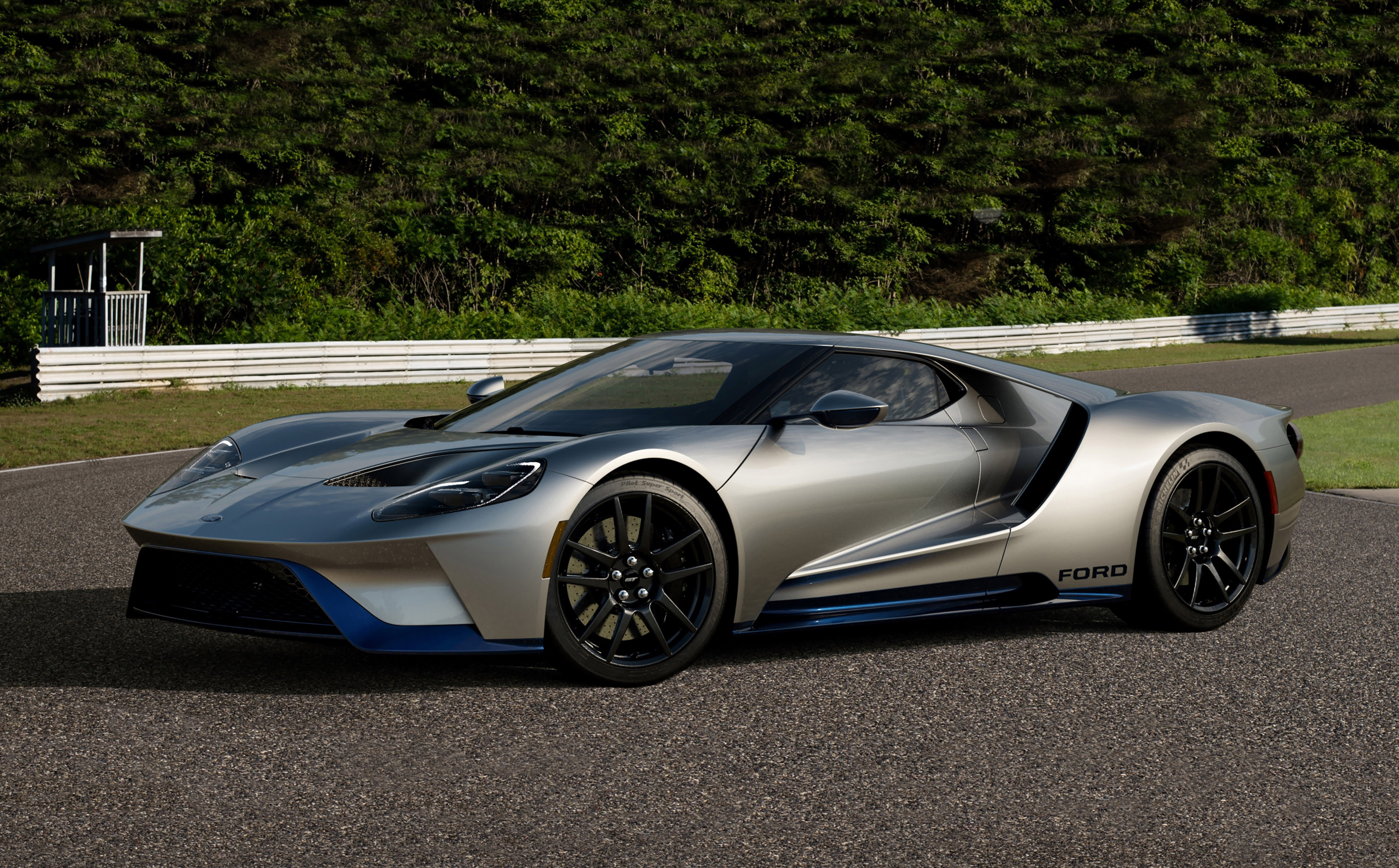
12. **Ford 4.9L Inline-6 (300 cu in)**In the realm of American workhorses, few engines command the respect and admiration quite like the Ford 4.9L Inline-6, famously known as the “300 Inline-6.” This engine isn’t just a powerplant; it’s a cult classic, a symbol of unwavering durability that anchored Ford’s F-Series trucks for over three decades, from 1965 all the way to 1996. It became one of the most widely used engines in the North American market, synonymous with rugged capability and relentless service.
The “300 Inline-6” earned its legendary status for a simple yet profound reason: its ability to literally run forever. Whether it was subjected to the grueling demands of heavy towing, constant hauling, or simply endless miles of daily grind, this engine just kept going. It embodies the principle that true reliability often stems from a simple, overbuilt design, rather than overly complex or fragile modern technologies.
Its construction speaks volumes about its resilience. The Ford 4.9L Inline-6 features a robust cast iron block and cylinder head, components designed to withstand immense stress and heat without faltering. Coupled with a low-revving, torque-focused tuning, it was engineered to excel at pulling power, not screaming horsepower. The minimal electronics involved in its operation further simplified its design, drastically reducing potential points of failure that plague more intricate contemporary engines.
This combination of a simple, overbuilt design, heavy-duty materials, and minimal electronic reliance made the 300 Inline-6 nearly indestructible and remarkably easy to maintain. Regardless of the task thrown its way, this engine continued to deliver, proving its worth in countless commercial and personal trucks. It remains a shining example of how straightforward, durable engineering can create an engine that stands the test of time, truly earning its place among the motors that just won’t die.
Car Model Information: 2024 Ford F-150 XLT
Name: Ford F-Series
Caption: 2022 Ford F-150 Lariat Luxury
Manufacturer: Ford Motor Company
Aka: Ford Lobo (Mexico, 1992–present)
Production: 1948–present
Class: Pickup truck#Full-size pickup truck
Layout: Front-engine, rear-wheel-drive layout,rear-wheel drive
Predecessor: 1941 Ford
Categories: All-wheel-drive vehicles, All Wikipedia articles written in American English, All articles that may contain original research, All articles with unsourced statements, Articles that may contain original research from September 2020
Summary: The Ford F-Series is a series of light-duty trucks marketed and manufactured by the Ford Motor Company since model year 1948 as a range of full-sized pickup trucks — positioned between Ford’s Ranger and Super Duty pickup trucks. Alongside the F-150 (introduced in 1975), the F-Series also includes the Super Duty series (introduced in 1999), which includes the heavier-duty F-250 through F-450 pickups, F-450/F-550 chassis cabs, and F-600/F-650/F-750 Class 6–8 commercial trucks.
Get more information about: Ford F-Series
Buying a high-performing used car >>>
Brand: Ford Model: F-Series
Price: $37,999 Mileage: 54,054 mi.
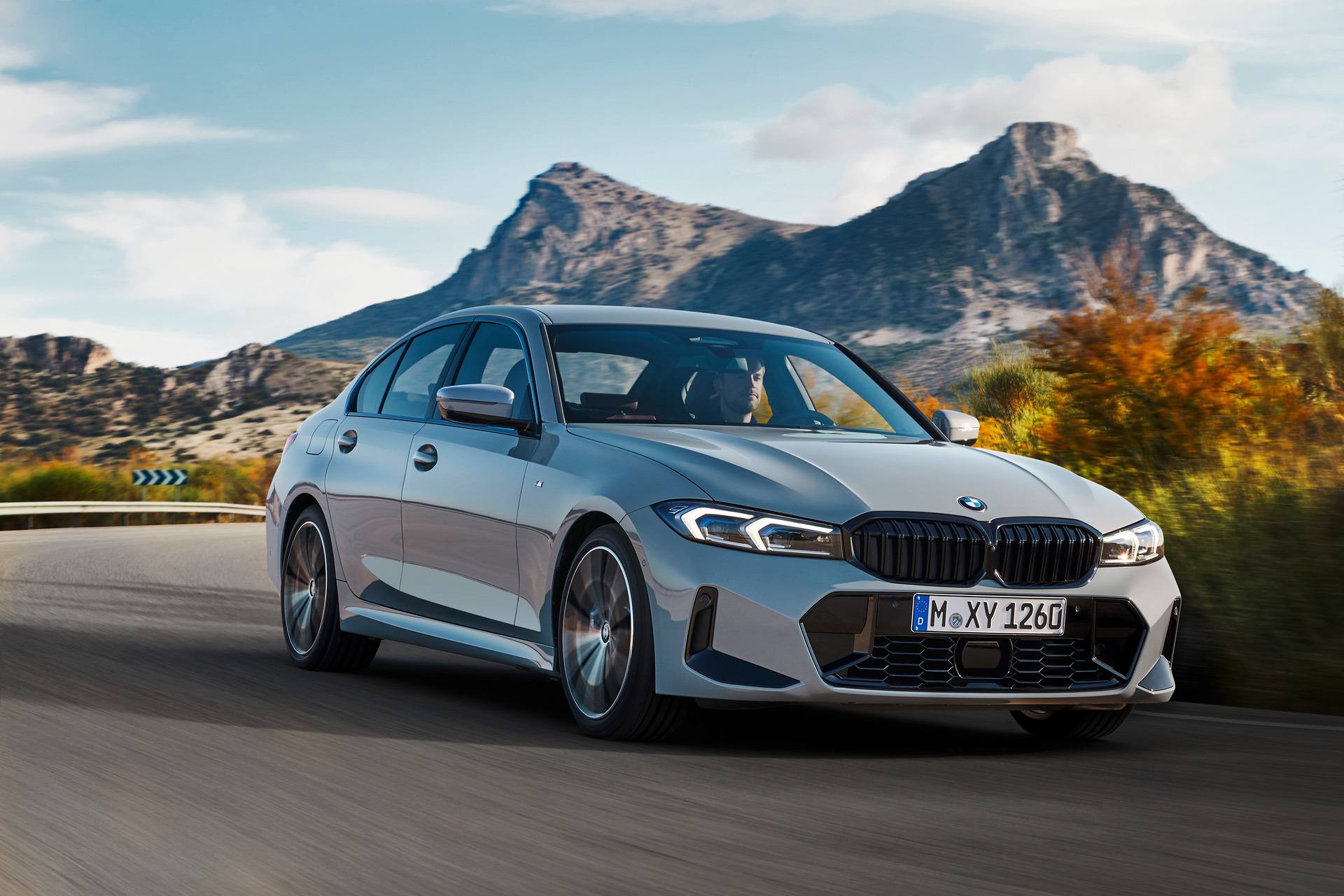
13. **BMW M54 Inline Six**When the discussion shifts to engines that blend exhilarating performance with a surprising degree of longevity, the BMW M54 Inline Six often emerges as a shining example. This beloved German performer, produced from 2000 to 2006, represents a golden era for BMW, offering that characteristic silky smoothness, engaging power delivery, and, crucially, genuine durability when given the proper attention and maintenance. It’s a motor that defined a generation of BMWs and continues to be highly regarded.
Found under the hood of iconic models like the E46 3 Series, the nimble Z3, and the robust X5, the M54 powered hundreds of thousands of legendary cars. This naturally aspirated six-cylinder engine series was celebrated for its quality internals and its ability to deliver power with an incredibly refined, linear feel that BMW is famous for. Enthusiasts often point to its balance of responsiveness and acoustic pleasure as a key highlight, making every drive an event.
While some might mistakenly believe that modern BMW engines inherently possess greater durability, the M54 serves as a strong counterpoint. Its reputation for longevity, when diligently maintained, speaks for itself. Proper oil changes, attention to cooling system components, and addressing minor issues promptly can see these engines confidently surpass 200,000 miles, still delivering that quintessential BMW driving experience.
The M54’s design, with its quality internals and straightforward approach to power delivery, stands in contrast to some of the more complex, highly turbocharged offerings that followed. For those who appreciate an engine that provides a rare blend of mechanical sophistication, engaging performance, and reliable service over the long haul, the BMW M54 Inline Six continues to be an automotive gem, proving that German engineering can indeed offer both excitement and enduring quality.
Read more about: Beyond the Odometer: 15 Legendary Engines That Defy Time, Powering On Strong Past 200,000 Miles and into Automotive Immortality

14. **Chrysler 3.6L Pentastar V6 (Post-2014)**The journey of the Chrysler 3.6L Pentastar V6 is a compelling story of resilience, refinement, and ultimately, a triumphant return to dependability. Initially introduced with some notable issues concerning oil cooling and cylinder heads, this V6 engine could have easily faded into automotive obscurity. However, through dedicated engineering effort and a commitment to improvement, Chrysler meticulously refined the Pentastar, slowly but surely transforming it into a genuinely solid and reliable engine that undeniably earns its place on this list of motors that just won’t die.
This evolution is a testament to the power of trial and error in the automotive industry. It showcases that with enough time, sustained knowledge, and a willingness to address shortcomings, even engines that start with a reputation for unreliability can be completely revitalized and emerge as symbols of modern dependability. The post-2014 iterations of the Pentastar V6 stand as clear proof of this commendable turnaround, earning the affectionate nickname “the comeback kid” among enthusiasts and mechanics alike.
The key to this remarkable transformation lies in several critical engineering updates. Chrysler implemented redesigned cylinder heads, which directly addressed the earlier issues that plagued the engine. Alongside this, improvements to the cooling system were made, crucial for long-term engine health and preventing overheating. Furthermore, updated electronics were integrated, enhancing overall engine management and performance. These collective refinements drastically improved the Pentastar’s durability and efficiency.
Today, the post-2014 Chrysler 3.6L Pentastar V6 is a ubiquitous and trusted powerplant across a wide range of Stellantis vehicles, powering everything from rugged Jeeps and powerful Dodges to comfortable Chryslers. Its journey from initial challenges to becoming a symbol of modern dependability serves as an inspiring example of how commitment to continuous improvement can lead to an engine that offers both robust performance and enduring reliability for hundreds of thousands of miles.
As we conclude our deep dive into these mechanical titans, it’s clear that the automotive world is rich with engines designed not just for the sprint, but for the marathon. Whether it’s the high-revving resilience of a Honda B-series, the unyielding grunt of a Toyota 2UZ-FE, or the refined endurance of a BMW M54, these powerplants share a common thread: exceptional engineering blended with a commitment to lasting quality. They stand as powerful reminders that while cutting-edge technology and flashy features have their place, the true heart of any truly great vehicle lies in an engine that simply won’t quit.
Car Model Information: 2024 Mazda CX-5 2.5 S Carbon Edition
Name: Pentastar engine
Manufacturer: Chrysler
Production: [object Object]
Predecessor: Chrysler SOHC V6 engine,Chrysler 3.3 & 3.8 engine,Chrysler LH engine,Chrysler PowerTech engine#3.7 EKG
Successor: FCA Global Medium Engine,Turbocharged,Inline-four engine
Configuration: V6 engine
Displacement: cvt,cvt,cvt
Bore: cvt
Stroke: cvt
Block: Aluminium
Head: Aluminium
Valvetrain: Dual overhead camshaft,Multi-valve#Four valves
Timing: Timing belt (camshaft)
Compression: 10.7:1 (3.2L),10.2:1 (3.6L),11.3:1 (Upgrade)
Fuelsystem: Sequential multi-port fuel injection
Fueltype: Gasoline,E85
Oilsystem: Wet sump
Coolingsystem: Radiator (engine cooling)
Power: cvt
Torque: cvt
Length: cvt
Categories: Articles with short description, Chrysler engines, Commons category link from Wikidata, Gasoline engines by model, Short description is different from Wikidata
Summary: The Chrysler Pentastar engine family is a series of aluminium (die-cast cylinder block) dual overhead cam 24-valve gasoline V6 engines introduced for the 2011 model year in Chrysler, Dodge, Ram and Jeep vehicles. The engine was initially named “Phoenix,” but the name was changed before the official launch due to a trademark conflict; the Pentastar name is derived from the trademark of the former Chrysler Corporation, which dates back to 1963. It will eventually be replaced by the Hurricane 4 EVO engine as the main corporate engine for Stellantis North America.
Get more information about: Chrysler Pentastar engine
Buying a high-performing used car >>>
Brand: Chrysler Model: 3.6L Pentastar V6
Price: $25,958 Mileage: 26,006 mi.
Indeed, the most durable and powerful engines of today, including those like the Honda K-Series and Toyota 2GR-FE from our broader context, are trusted across industries for their outstanding performance, longevity, and ease of maintenance. They are ideal not only for personal vehicles but also for demanding commercial and fleet applications. However, even these robust marvels are only as good as the care they receive. Diligent routine maintenance, the use of quality components, and reliable supply chains remain the cornerstones of ensuring a long engine life and sustained, dependable performance. The legacy of these incredible motors teaches us that true automotive excellence is built on a foundation of endurance.

